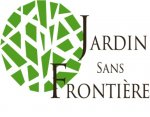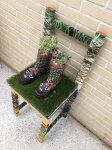accueil site > 45. Archives > Paysage et patrimoine > 12. Pedagogic tools > 17. Pedagogic tools > 0998. 26 - To create convivial green spaces in the school using recycled (...)
-
45. Archives
-
Paysage et patrimoine
-
01. Fiches pédagogiques
Disciplines
-
01. Teaching materials
Disciplines
-
02. Jardin sans frontière : une école pour développer les compétences -clés en Europe
- 04. Partenaires
- 05. Rencontres transnationales
- 14. À l’école du jardin. Mobilités de formation dans les jardins d’Europe
- 15. À l’école européenne du jardin. Paroles de formateurs sur leurs formations "entre pairs"
- 16. A l’école auropéenne du jardin. Paroles d’apprenants sur leurs mobilités Erasmus+
- 19. Petit glossaire "européen" du jardin
- 20. Dissémination
- 21. Exploitation locale du projet
- 03. Un nouvel Erasmus+ : Le bleu européen comme étendard contre l’exclusion des adultes
-
09. Erasmus+ partenariato
-
Cammini del Blu in Europa
- 01. Incontri transnazionali
- 05. Progetti blu di partners
- 10. Percorsi europei del Blu
- 20. Storie blu
- 40. Disseminazione
- 43. Transcultural Carpet Blue
- 45. Missive blu
- 46. Glossario blu
- 47. Schede didattiche "Pedagogia del colore blu in Europa"
- 48. Illustrazioni delle schede didattiche : Mostra delle opere degli studenti
-
Giardino senza frontiere. Una scuola per lo slivuppo di competenze chiave in Europa
- 04. Partners
- 05. Riunioni transnazionali
- 14. Alla scuola del giardino. Mobilità di formazione nei giardini d’Europa
- 15. Alla scuola del Giardino. Parole di formatori sul loro addestramento "tra pari"
- 16. Alla scuola del giardino. Parole dei discenti sul loro Erasmus + Mobilità
- 19. Piccolo glossario europeo del giardino
-
Cammini del Blu in Europa
-
11. Erasmus+ Partnership
- 01. Transnational Meetings
- 05. Blue Projects of partners
- 07. European roads of the Blue
- 10. Blue stories
- 40. Dissemination
- 43. Transcultural Carpet Blue
- 45. Blue Missives
- 46. Blue Glossary
- 48. Roads of the blue : the file
- 50. Illustrations of the pedagogic file : exhibition of works of learners
-
51. Garden Without Borders : A School for Developing Key Competences in Europe
- 04. Partners
- 05. Transnational meetings
- 14. At Garden School. Training mobilities in the gardens of Europe
- 15. At Garden School. Words of trainers on their "peer-to-peer" training
- 16. At Garden School. Learners’ words about their mobility Erasmus +
- 19. Small European glossary of the garden
- 20. Dissemination
-
11. Partenariats Erasmus+
-
01. Les chemins du bleu en Europe
- 01. Rencontres transnationales
- 05. Projets bleus des partenaires
- 10. Routes du Bleu en Europe ...
- 20. Histoires Bleues
- 40. Dissémination
- 43. Transcultural Carpet Blue
- 45. Missives bleues
- 46. Glossaire bleu
- 47. Formation pédagogique : fiches pédagogiques et référentiel de compétences clés et transversales
- 50. Illustrations des fiches pédagogiques : exposition des travaux des apprenants
-
01. Les chemins du bleu en Europe
- 12. Pedagogic tools
- 17. Fiches pédagogiques
- 17. Schede Pedagogiche
-
01. Fiches pédagogiques
- 05. Livre d’or des formations
- 07. Livre d’or des formations Comenius - Grundtvig
- 10. National
- 20. International
-
Paysage et patrimoine
0998. 26 - To create convivial green spaces in the school using recycled objects and furniture as "flower boxes"vendredi 15 février 2019
PROJECT
In this team project, the students are involved in the creation of some convivial green spaces n the school using recycled furniture and objects employed as ’gardeners’ of outside and inside plants.
Besides favouring the well being and the quality of the school environment, this team work falls within a cross-curricular approach favourable to the inclusion of students with learning difficulties and to the learning of key and transversal competences
PUBLIC
High school students who have chosen the optional learning of Visual and Audiovisual Arts.
The team of Granada has presented the activity on the occasion of the fourth peer-to-peer training mobility of the project, which took place at the Botanical Garden of the University of Padua, Italy, from 14 to 18 May 2019.
KEY COMPETENCES
![]() Communication in the mother tongue
Communication in the mother tongue
![]() Learning to learn
Learning to learn
![]() Social competences and citizenship
Social competences and citizenship
![]() Humanist culture and expression of sensitivity
Humanist culture and expression of sensitivity
OBJECTIVES
![]() To behold, interpret, reflect and analyse the world around
To behold, interpret, reflect and analyse the world around
![]() To overcome the stereotypes linked to the artistic expression and be able to link it to other cultural fields
To overcome the stereotypes linked to the artistic expression and be able to link it to other cultural fields
![]() To use the garden, the colours, the texture of the plants to develop creativity, imagination and artistic expression
To use the garden, the colours, the texture of the plants to develop creativity, imagination and artistic expression
![]() To learn how to work in a team to realise an artistic project, outlining organization, steps and self-evaluation. To learn how to be part of a project and assume responsibility for part of its realization
To learn how to work in a team to realise an artistic project, outlining organization, steps and self-evaluation. To learn how to be part of a project and assume responsibility for part of its realization
![]() To develop a cross-curricular learning on the garden involving mother tongue, arts and sciences
To develop a cross-curricular learning on the garden involving mother tongue, arts and sciences
GARDENS EXPLORED
The garden of IES Escultor Sanchez Mesa de Otura (Granada)
MATERIALS
To recycle furniture and transform it into ’gardeners’
![]() small pieces of furniture found in rubbish dumps (wheels, chairs, tables, other objects..)
small pieces of furniture found in rubbish dumps (wheels, chairs, tables, other objects..)
![]() woodwork, scraping and cleaning tools for the repairing and preparation of the furniture
woodwork, scraping and cleaning tools for the repairing and preparation of the furniture
![]() acrylic painting, brushes.
acrylic painting, brushes.
To present texts narrating the new life of the furniture and its transformation into ’gardeners’
![]() computer for the production of texts
computer for the production of texts
![]() laminating machine
laminating machine
For the ’gardeners’ plantations .
Interior and exterior plants supplied by a sponsor (Exmo) and by the Municipal Council of Otura Granada.
DEVELOPMENT
![]() Creation of an additional work team composed of teachers, parents, town officials, sponsors, ready to collaborate, to plan and schedule the work progress, to focus on the material and technical resources
Creation of an additional work team composed of teachers, parents, town officials, sponsors, ready to collaborate, to plan and schedule the work progress, to focus on the material and technical resources
![]() Presentation of the project : analysis of the consumer habits prevailing in today’s society and of the need to act in an environment-friendly manner. Focus on the meaning of restoring : to renovate, repair or revive something to its previous state giving it new life
Presentation of the project : analysis of the consumer habits prevailing in today’s society and of the need to act in an environment-friendly manner. Focus on the meaning of restoring : to renovate, repair or revive something to its previous state giving it new life
![]() Observation and analysis of the objects and furniture to be recycled : study the ways fit to give them new life and not just a piece of rubbish
Observation and analysis of the objects and furniture to be recycled : study the ways fit to give them new life and not just a piece of rubbish
![]() Elaboration of the recycled object seen as a resource able to free and develop one’s creativity. Study of the colours, painting, motifs, collage, plantations
Elaboration of the recycled object seen as a resource able to free and develop one’s creativity. Study of the colours, painting, motifs, collage, plantations
![]() Writing personal texts telling stories of the furniture transformed into ’gardeners’. Display of the texts on the walls of the school
Writing personal texts telling stories of the furniture transformed into ’gardeners’. Display of the texts on the walls of the school
![]() Being aware of the impact the new, colourful ’gardeners’ have on the interior and exterior spaces of the school.
Being aware of the impact the new, colourful ’gardeners’ have on the interior and exterior spaces of the school.
EVALUATION
It takes into account the ability to :
Communicate orally and in writing in the mother tongue
![]() Correct use of the oral and written language
Correct use of the oral and written language
![]() Produce a personal story on the new life of the object/furniture
- Express ideas, information, opinions
Produce a personal story on the new life of the object/furniture
- Express ideas, information, opinions
Develop competences addressed to awareness and cultural expression
![]() through art and culture, develop personal enrichment and the capacity to express one’s own relationship with the world
through art and culture, develop personal enrichment and the capacity to express one’s own relationship with the world
![]() use artistic creativity as a means of personal expression. Practise visual arts in a real context in an unusual way at school using recycling materials, an art largely employed by the visual artists of this and the past century. Use recycled materials to work in a real environment
use artistic creativity as a means of personal expression. Practise visual arts in a real context in an unusual way at school using recycling materials, an art largely employed by the visual artists of this and the past century. Use recycled materials to work in a real environment
![]() be able to adjust to a specific subject or environment in order to develop one’s own creativity. Use an event, current positive or negative situations as means of personal expression.
be able to adjust to a specific subject or environment in order to develop one’s own creativity. Use an event, current positive or negative situations as means of personal expression.
![]() create collective and personal visual, graphic compositions
create collective and personal visual, graphic compositions
Learning to learn
Learn how to realize an artistic project, outline its organization, phases, and self-evaluation
Develop social and civic competences. Learn hoe to work in a team, get involved in a project, assume responsibility.
AUTHOR
Maria del Carmen Casa Ubeda, Visual Artist. Teacher of Visual Arts and audiovisuals.
IES Escultor Sanchez Mesa de Otura (Granada) educational centre connected with the pedagogical team of Granada coordinated by the Botanical Garden of the University of Granada, Spain
TRANSLATER
Mary Gino
Association Acquamarina, Trieste, Italie















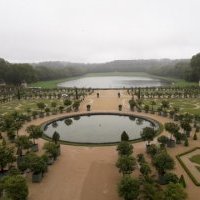
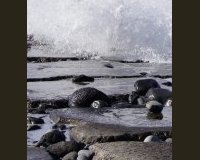
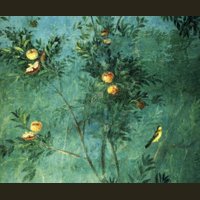
 Version imprimable
Version imprimable